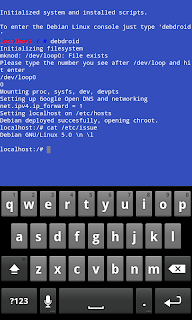Network Packet Analyzer, a network analyzer program that help network administrator captures and interactively browse the traffic packet that running on a computer network and analyze traffic information
1.
WireShark : Wireshark packet sniffer is the most popular free network packet sniffer that works on both Unix, as well as Windows. Wireshark packet sniffer able to capture live real-time network packets. Apart from that, it is able to intelligently decipher packets based on their protocol. It can show the capture data on GUI. It is even able to detect and capture VOIP calls, and in some cases can even play back the media.
Apart from that, Wireshark network packet website also provides tons of resources, including videos, to learn how to use Wireshark, and analyze Wireshark data!
2.
Microsoft Network Monitor: Microsoft Network Monitor is a free network packet analyzer and works on Windows PCs only. It provides expert network capability to see all the network traffic in real time on an intuitive GUI. Meanwhile, it can capture and view network information more than 300 public, and Microsoft proprietary network protocols including wireless network packets.
Besides that, Microsoft Network Monitor can be used by beginners just to analyze their home network traffic, or by network administrators to analyze complete organization network by sniffing network packets.
Download Microsoft Network Monitor here
3.
Capsa Packet Sniffer: Capsa is a must-have network packet analyzer freeware for network administrators to monitor, troubleshoot and diagnose their network.The free network packet analyzer version comes with tons of features, and is good enough for home use, as well as use in small business.
Free Capsa Packet Sniffer software lets you monitor and capture 50 IP addresses network traffic data together and effective network analysis in real time by sniffing network packets, and analyze them.
Capsa Packet Sniffer Features:
Detailed Traffic Monitor of all computers
Bandwidth monitoring (to find which computers are watching online videos)
Network diagnosis to identify problems in network
Netwok activity logging (for recording IM, and web mail)
Network behavior monitoring
Download Capsa Packet Sniffer here.
4.
InnoNWSniffer: The name InnoNWSniffer stands for Inno Network Sniffer. The application was developed to be a small IP scanner similar to Network Sniffer. It can scan Live Public IP and scan any computer on the LAN. More over it can give a detailed system Information.
5.
SniffPassSniffPass is a unique traffic packet sniffer, which it focuses on capturing passwords from network traffic. Whenever you active Sniffpass password sniffer, it will keeps on monitoring network traffic and as soon as it intercepts a password, it instantly shows that on screen. This is a great way to find forgotten passwords of websites.
Sniffpass password sniffer is quite easy in its use, and provides a nice GUI to monitor all captured passwords. Sniffpass password sniffer supports most of the networks protocols, like: POP3, IMAP4, SMTP, FTP, and



